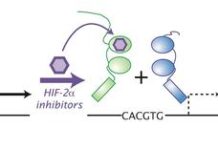In Asian patients with stage III colon cancer, shortening duration of adjuvant treatment from 6 to 3 months did not compromise efficacy. Disease-free survival (DFS) and overall survival (OS) at 5 years were comparable in the 3-month and 6-month treatment groups. Furthermore, peripheral sensory neuropathy lasting longer than 5 years was more common in the 6-month compared with 3-month treatment group, and in patients receiving modified FOLFOX compared with CAPOX. Findings from the phase III ACHIEVE study are published on 5 May 2022 in the Journal of Clinical Oncology by Dr. Takayuki Yoshino of the Department of Gastroenterology and Gastrointestinal Oncology, National Cancer Center Hospital East in Kashiwa, Japan and colleagues.
The phase III ACHIEVE (Adjuvant Chemotherapy for Colon Cancer with High Evidence) study was a multicentre, open-label, randomised phase III study conducted in Japan. It was one of 6 prospective randomised studies included in the International Duration Evaluation of Adjuvant Therapy (IDEA) collaboration. The main objective of the ACHIEVE study was to provide data on more than 1,000 Asian patients for the IDEA collaboration. The IDEA collaboration explored whether administering 3 months of adjuvant FOLFOX or CAPOX would be noninferior to 6 months of treatment in patients with stage III colon cancer.
An initial safety analysis of the ACHIEVE study reported better compliance and tolerability when oxaliplatin-containing adjuvant chemotherapy was administered for 3 compared with 6 months. The shorter duration of treatment was associated with a reduced incidence of peripheral sensory neuropathy, regardless of fluoropyrimidine backbone. A subsequent analysis with longer follow-up confirmed that the rate of long-lasting peripheral sensory neuropathy was significantly lower for patients receiving 3 compared with 6 months of adjuvant treatment and was also significantly lower for those receiving CAPOX compared with modified FOLFOX6. Shortening treatment duration did not appear to compromise the efficacy of adjuvant treatment. The study team is now reporting the final analyses of survival and long-term safety from the ACHIEVE study.
Eligible patients were randomly assigned in the ACHIEVE study 1:1 to either 3 or 6 months of adjuvant modified FOLFOX6 or CAPOX, as selected by the treating physician. Random assignment was stratified according to number of involved lymph nodes, centre, regimen, primary site, and age. The primary endpoint was DFS, assessed in the modified intention-to-treat (ITT) population; OS was a secondary endpoint.
The modified ITT population comprised 1,291 patients, 641 in the 6-month treatment group and 650 in the 3-month treatment group. Median follow-up for this final analysis was 74.7 months; 5-year DFS rates were 75.2% (95% confidence interval [CI] 71.7 to 78.4) in the 3-month treatment group and 74.2% (95% CI 70.6 to 77.5) in the 6-month treatment group (hazard ratio [HR] 0.95; 95% CI 0.77 to 1.18; p = 0.64); 5-year OS rates were also comparable, 87.0% in the 3-month treatment group and 86.4% in the 6-month treatment group (HR 0.91; 95% CI 0.69 to 1.20; p = 0.51). Subgroup analysis of OS did not reveal a significant interaction between baseline characteristics and treatment duration.
Peripheral sensory neuropathy lasting longer than 5 years was more common in the 6-month compared with 3-month treatment group (16% versus 8%), and in those who received modified FOLFOX6 compared with CAPOX (14% versus 11%).
The authors concluded that in Asian patients with stage III colon cancer, 3 months of CAPOX treatment is an appropriate adjuvant treatment option, particularly in patients with low-risk disease.
The study was sponsored by the Japanese Foundation for Multidisciplinary Treatment of Cancer and Yakult Honsha Co, Ltd also provided funding support.
Reference
Yoshino T, Oki E, Misumi T, et al. Final Analysis of 3 Versus 6 Months of Adjuvant Oxaliplatin and Fluoropyrimidine-Based Therapy in Patients With Stage III Colon Cancer: The Randomized Phase III ACHIEVE Trial. JCO; Published online 5 May 2022. DOI: 10.1200/JCO.21.02628






